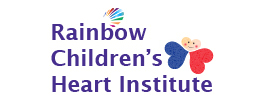The atrial septum is a wall of muscles that separates the left and the right atria, which are the two upper chambers of the heart. Atrial Septal Defect is a congenital heart defect that is characterized by a hole in the atrial septum. The hole is defined as an abnormal opening in the upper walls of the heart. Due to this, the oxygenated blood can travel from the left atrium to the right atrium to mix with the de-oxygenated blood. Due to this mixing of oxygenated and de-oxygenated blood, the amount of blood that goes into the lungs increases, and a swishing sound in the lungs, known as a heart murmur, can be heard by doctors.
Most children who have atrial septal defects are born with it. But it is possible that it can happen during their childhood. It can also occur in children who suffer from other heart diseases and heart defects. Research has shown that young girls have a much higher chance of being born with Atrial Septal Defect as compared to boys. If diagnosed at an early age, the defect can be treated without any major complications. If you think that your child might have Atrial Septal Defect, you should contact the best pediatric cardiac surgeon in Hyderabad to diagnose the problem and begin treatment.
Causes of Atrial Septal Defect
Atrial Septal Defect is a congenital disease, which means that most children are born with it. The hole in the wall between the left and the right atrium is formed during the fetal development of the heart. Any issues during this development can be the cause of such a defect.
In some cases of this defect, genetic inheritance is also seen. There may be missing or some extra pieces of chromosomes that may be responsible for this defect. However, in most cases, the cause of the defect is unknown.
Signs and Symptoms of Atrial Septal Defect in Children
The signs and symptoms of an Atrial Septal Defect can vary according to the size and location of the hole. There are no obvious symptoms that can accurately pinpoint the defect without tests and diagnosis. Most children who have this defect appear to have no to minimal symptoms and grow well according to their age.
If the defect is severe and at a later stage, some of the symptoms that are seen are –
- Shortness of breath
- Extreme exhaustion
- Poor appetite and growth
- Repeated lung problems
It is important that the defect is identified as early as possible. As the child grows older, the risk of complications like stroke, blood clots, lung infections also increases.
Diagnosis of Atrial Septal Defect in Children
The first sign of Atrial Septal Defect in Children is a ‘heart murmur’ that can be identified by a pediatric surgeon or a cardiologist at Rainbow Children’s Heart Institute. This heart murmur is caused due to the increased blood flow in the lungs. Your primary doctor may refer you to a pediatric cardiologist to provide better healthcare.
The following tests help in positively diagnosing the defect –
- Electrocardiogram – An EKG can be ordered by your doctor to record the electrical activity in the heart
- Chest X-Ray – This will help your doctor determine the size and position of the defect
- Echocardiogram – This is one of the primary tests that help in diagnosing Atrial Septal Defects. An Echo will provide your doctor a clear picture of the blood flowing through the chambers of the heart.
- Cardiac Catheterization – This method can be used to get a closer look at the atrial septal defect by inserting a thin tube near the heart.
Treatment for Atrial Septal Defect in Children
The treatment for atrial septal defects in children depends upon a lot of factors such as the size and location of the defect, the age of the patient, the severity of the issue, etc. A pediatric cardiologist in Hyderabad and experts at Rainbow Children’s Heart Institute will guide you on the various treatment options available for your child.
Some of the common treatment for Atrial Septal Defects include –
- Medicines – This is for children who no or minor symptoms that can be controlled using medicines. Medicines can help in getting rid of the extra fluid in the body. The child can live a fairly normal life with medicines.
- Surgery – A surgery will be required if the hole is large and cannot be treated with medicines. The defect is closed using stitches.
- Device Closure – In some cases, a septal occlude, a device made to close the hole is inserted into the hole to separate the heart chambers.
Your pediatric cardiologist will be able to guide you on the course of treatment according to the diagnostic report of your child.
